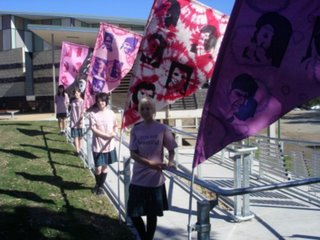


About the Pianola Lanterns
The pianola lanterns' alternative use of these musical scores sheds light on the now-obscure practice of playing and singing round a pianola. In fact the pianola scroll is possibly the oldest form of digital music with each punched-out slot corresponding to a particular key on the piano; and the length of the slot determining the time the note would play for. In addition the pianola scrolls carried the lyrics running up the side of the scroll and visible to singers gathered around 'the goanna' possibly making it the oldest form of karaoke.
Hidden from immediate view, inside each lantern, is a base replicating in plaster, hand-stitched crochet doileys which inspire similar questions of who might have stitched this doiley and which dining table or bedroom dresser did it adorn? What conversations took place over the hours it took to make the doiley?So with each lantern comes the mystery of the song:
Who last played it? Who sang along? Whose eye were they wishing to catch?
What happened next?
So take the lanterns out into the night, have a bbq and a drink or two, start singing and see what happens next. . .
Check out the latest in beautiful hand-made art, craft, and design works at Incube8r Gallery in Wickham St Fortitude Valley (between McWhirters and The Wickham)
http://www.incube8r.com.au/blog/










